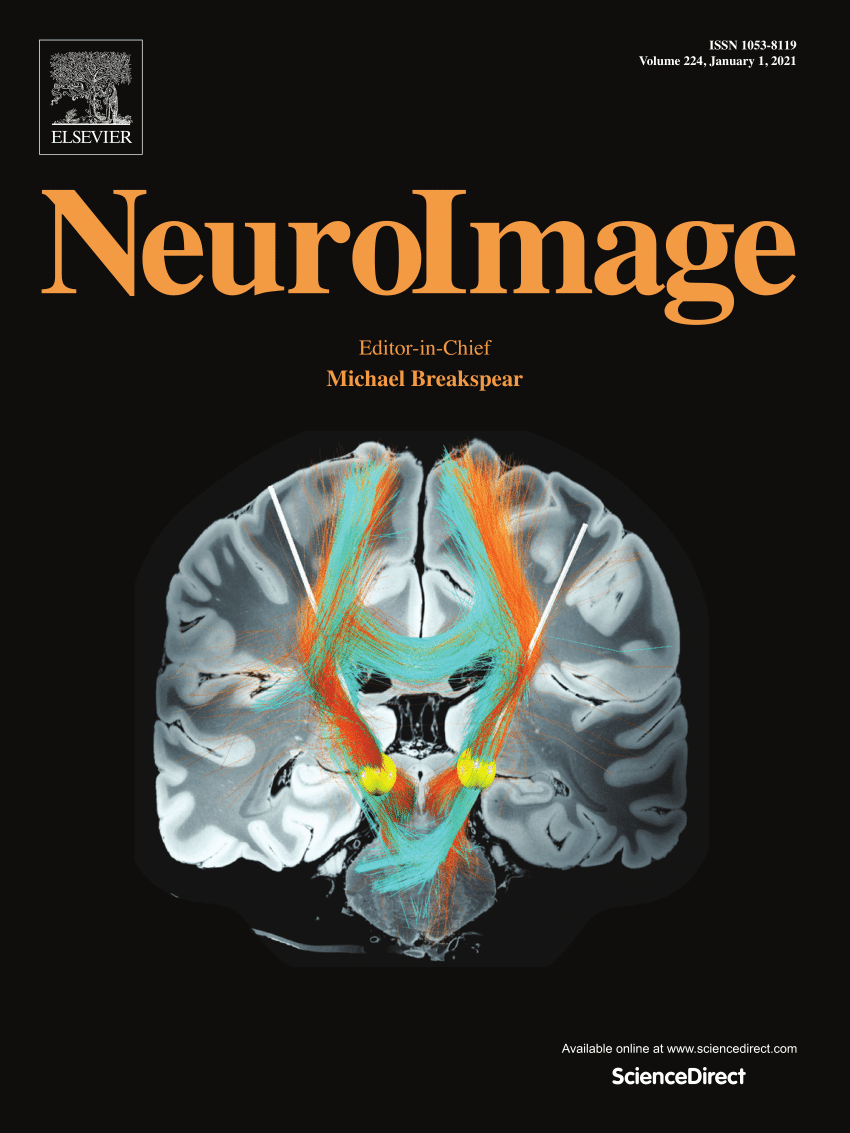Structural connector hub properties of the thalamus in large-scale brain networks: white matter structure as an anatomical basis
IF 4.7
2区 医学
Q1 NEUROIMAGING
引用次数: 0
Abstract
Connector hubs are critical to maintain the modular architecture of large-scale brain networks. This study aimed to explore the structural connector hub properties of the thalamus via the white matter pathways as an anatomical substrate. First, whole-brain tractography was performed to examine the thalamocortical structural connectivity (SC) based on the canonical seven resting-state networks (7-RSNs). It identified multiple overlapping clusters in the thalamus, which are highly connected to the canonical 7-RSNs. Graph theoretical analysis indicated that these clusters have higher participation coefficient (PC) and within-module degree Z-score (WMD) values, suggesting nodal centrality between separate modules. Further, thalamic nuclei with structurally defined connector hub properties showed high functional connectivity (FC) with canonical RSNs in multiple task-fMRI analyses. Collectively, these findings suggest that the thalamus harbors intrinsic structural connector hub properties in large-scale networks as an anatomical basis.
大规模脑网络中丘脑的结构连接中心特性:白质结构作为解剖学基础
连接器集线器对于维护大规模大脑网络的模块化架构至关重要。本研究旨在通过作为解剖基质的白质通路探索丘脑的结构连接枢纽特性。首先,采用全脑神经束造影检测基于典型7静息状态网络(7-RSNs)的丘脑皮质结构连通性(SC)。它在丘脑中发现了多个重叠的簇,这些簇与规范的7- rsn高度相关。图理论分析表明,这些集群具有较高的参与系数(PC)和模块内度z得分(WMD)值,表明各个模块之间存在节点中心性。此外,在多任务- fmri分析中,具有结构定义连接器中心特性的丘脑核显示出与规范rsn的高功能连通性(FC)。总的来说,这些发现表明,丘脑在大规模网络中具有内在的结构连接枢纽特性,这是一种解剖学基础。
本文章由计算机程序翻译,如有差异,请以英文原文为准。
求助全文
约1分钟内获得全文
求助全文
来源期刊

NeuroImage
医学-核医学
CiteScore
11.30
自引率
10.50%
发文量
809
审稿时长
63 days
期刊介绍:
NeuroImage, a Journal of Brain Function provides a vehicle for communicating important advances in acquiring, analyzing, and modelling neuroimaging data and in applying these techniques to the study of structure-function and brain-behavior relationships. Though the emphasis is on the macroscopic level of human brain organization, meso-and microscopic neuroimaging across all species will be considered if informative for understanding the aforementioned relationships.
 求助内容:
求助内容: 应助结果提醒方式:
应助结果提醒方式:


